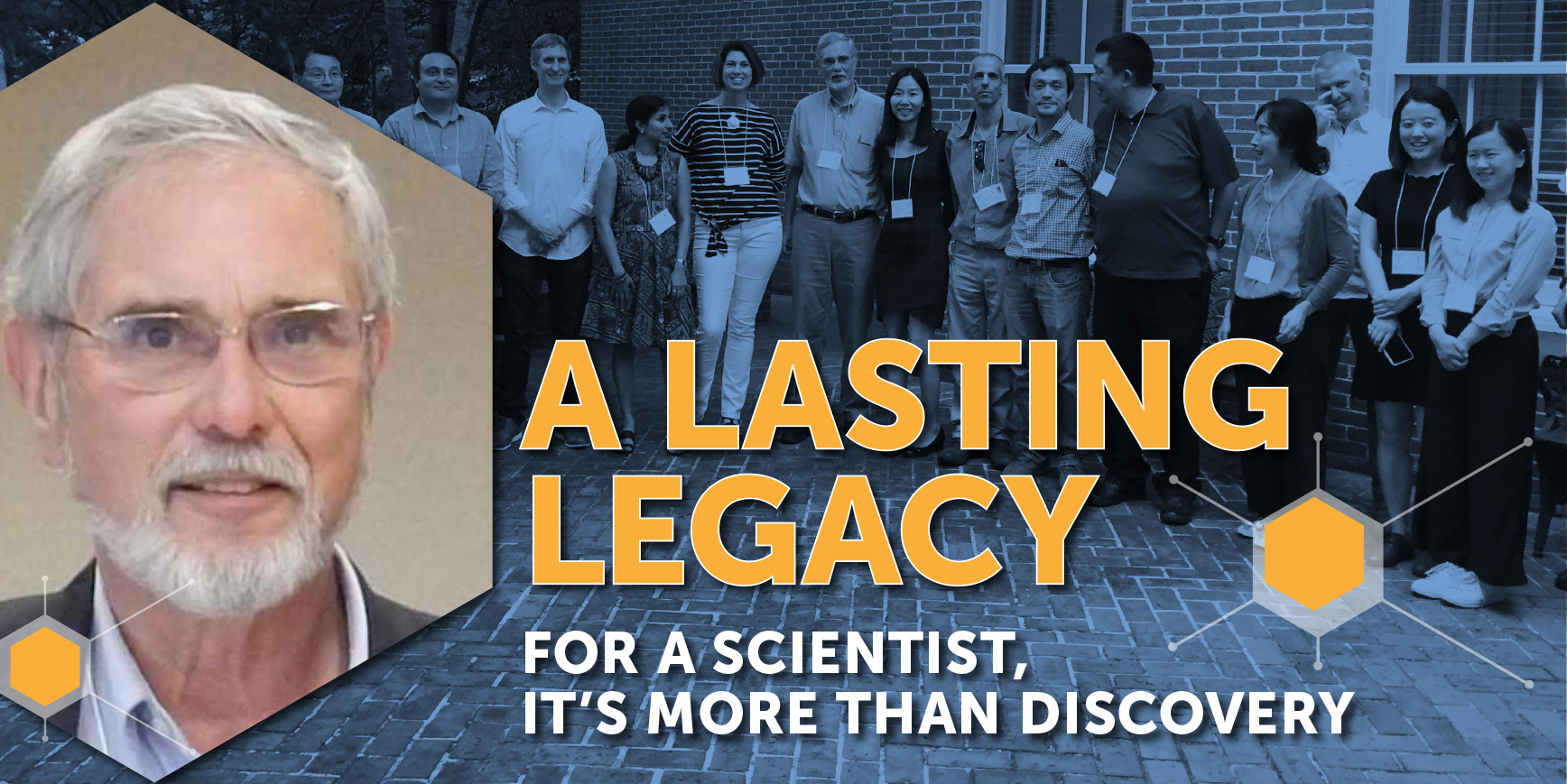

From our earliest days in school, we size up scientists by the results of their work.
Yet that assessment overlooks another outcome that’s just as important: how well a scientist prepares others to pursue their own exploration.
Five years ago, we wrote about the pending retirement of GRA Eminent Scholar Jim Prestegard. We emphasized his outputs and achievements. But earlier this year, we were reminded that such a description only halfway captures Prestegard’s contributions to scientific discovery.
In 2014, Prestegard was stepping away from his role overseeing a highly sophisticated research facility at the University of Georgia. The centerpiece of the facility is a 900 MHz nuclear magnetic resonance (NMR) spectrometer – a massive instrument resembling a small space ship, capable of generating atomic-level views of biologically important proteins, nucleic acids and carbohydrates. GRA helped buy the instrument.
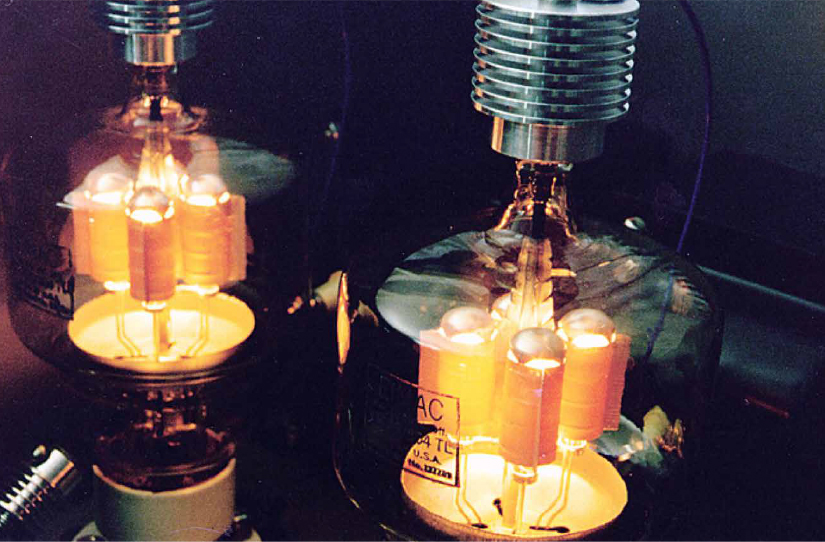

Prestegard’s expertise in NMR spectroscopy led to new ways to measure precisely the structures of molecular compounds. Scientists have used the tools and techniques he developed to advance their own study in wide-ranging fields. Hence, the legacy of Jim Prestegard – he empowered others by pioneering a field of instrumentation.
But he did something else, as so many other scientists do, and without acclaim. He nurtured a legion of young researchers who themselves went on to make significant accomplishments.
Over a weekend last May in Athens, colleagues and former students of Prestegard came together to celebrate his career, which despite his retirement, continues apace in the lab. Some made presentations on advances in their science owed in large to part to NMR spectroscopy. Others offered testimony, in person or by video, to Prestegard’s influence on the field and their careers.
And a half-dozen protégés – five of whom donned blue oxford shirts, a staple of the Prestegard wardrobe – spoke of the value of mentoring and preparing the next wave of scientists to solve problems in the world.
“Dr. Prestegard was always available whenever I had a problem with research, and that’s hard to do,” said Leslie-Anne Maxwell, now partner and chair of the pharmaceutical patent practice for Cantor Colburn. “In my job, I have a lot of things going on. Getting with my people daily is difficult, but it’s absolutely essential. It was good to be exposed to that when I was a student.”
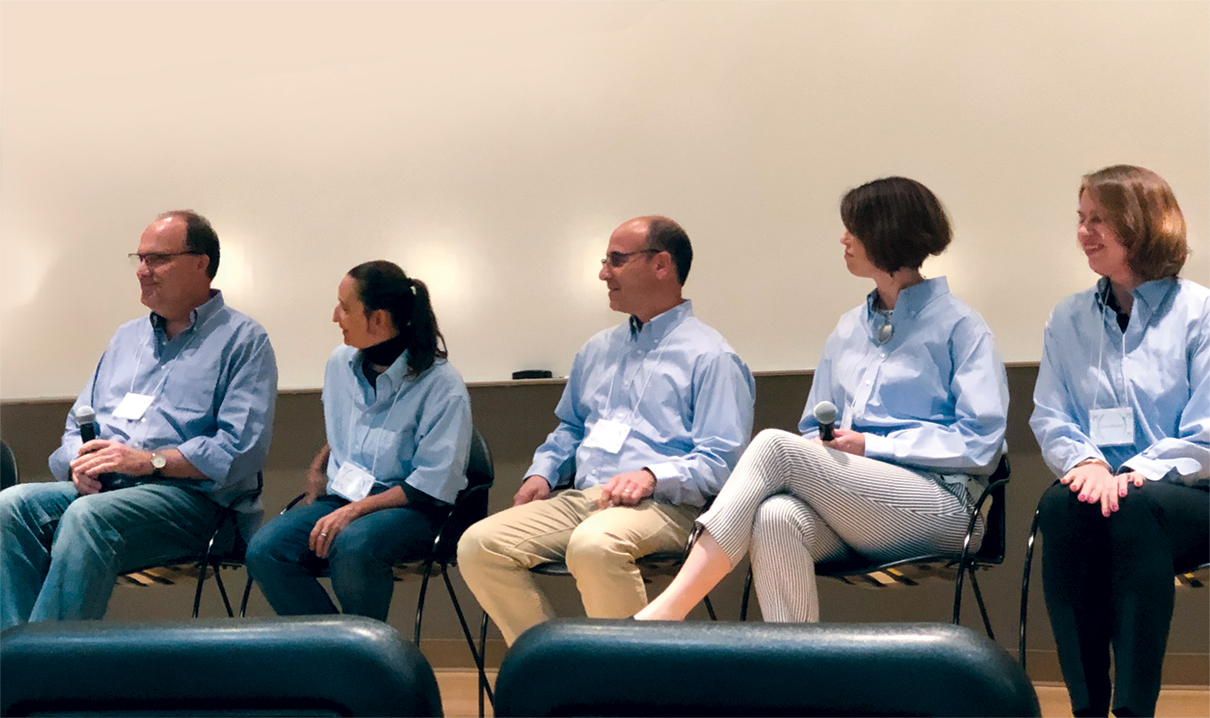
The weekend’s Saturday session was billed as a symposium. A number of scientists influential in the field are Prestegard protégés, and several presented on exciting developments in technology and research. There was Lewis Kay of the University of Toronto, who explored “The Magic of NMR,” and John Marino, leader of a federal research lab, who discussed “Structure Analysis of Monoclonal Antibody Therapeutics by NMR.” Others spoke to NMR’s capacity for changing structural biology, metabolomics and drug development.
The next morning, Prestegard took attendees on what he described as a “random walk” through his life and career. The walk began with his Minnesota roots and followed paths that led him to both coasts before his 1998 recruitment to Georgia (from Yale). A key figure in the journey was his mentor at CalTech, the chemist Sunney Chan, who was beginning to venture into NMR research.
Prestegard’s first week in Chan’s lab brought the arrival of a 100 MHz NMR spectrometer, packed in crates. “On the crates was sprayed ‘Do Not Open, Wait for Technician,’” Prestegard said. “We were standing around in the lab, and Sunney walks in and says, ‘What are you waiting for? Open it up and put it together.’ We pointed to the instruction on the outside of the crates. And he said, ‘Yeah, but that doesn’t mean you.’”
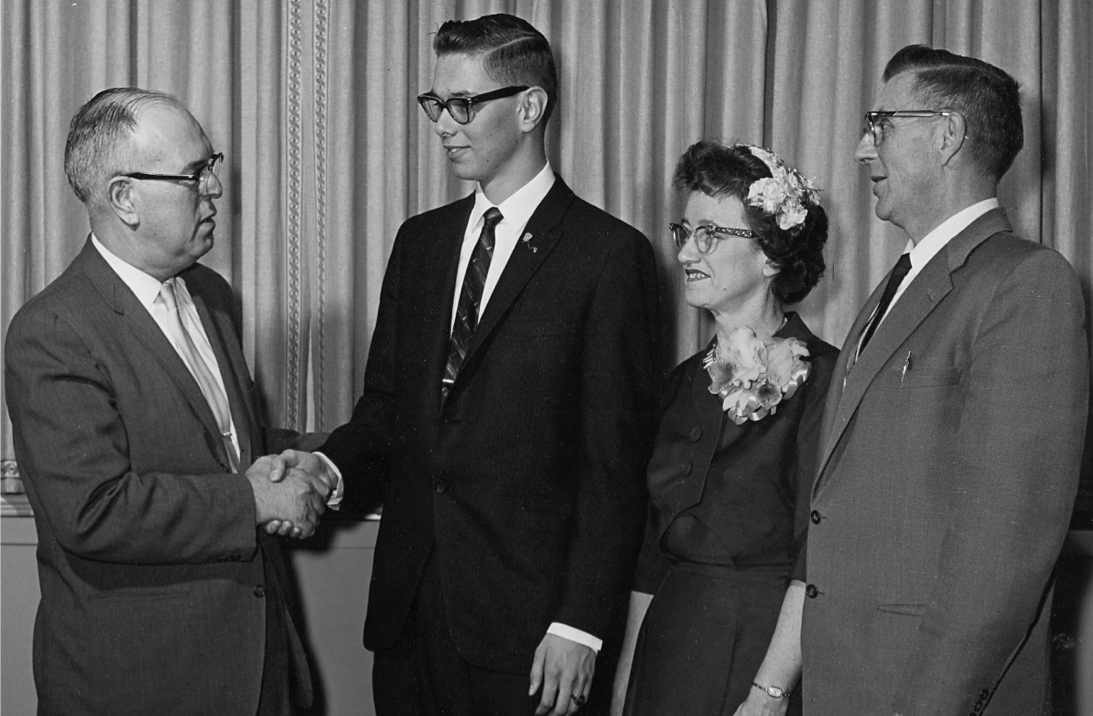
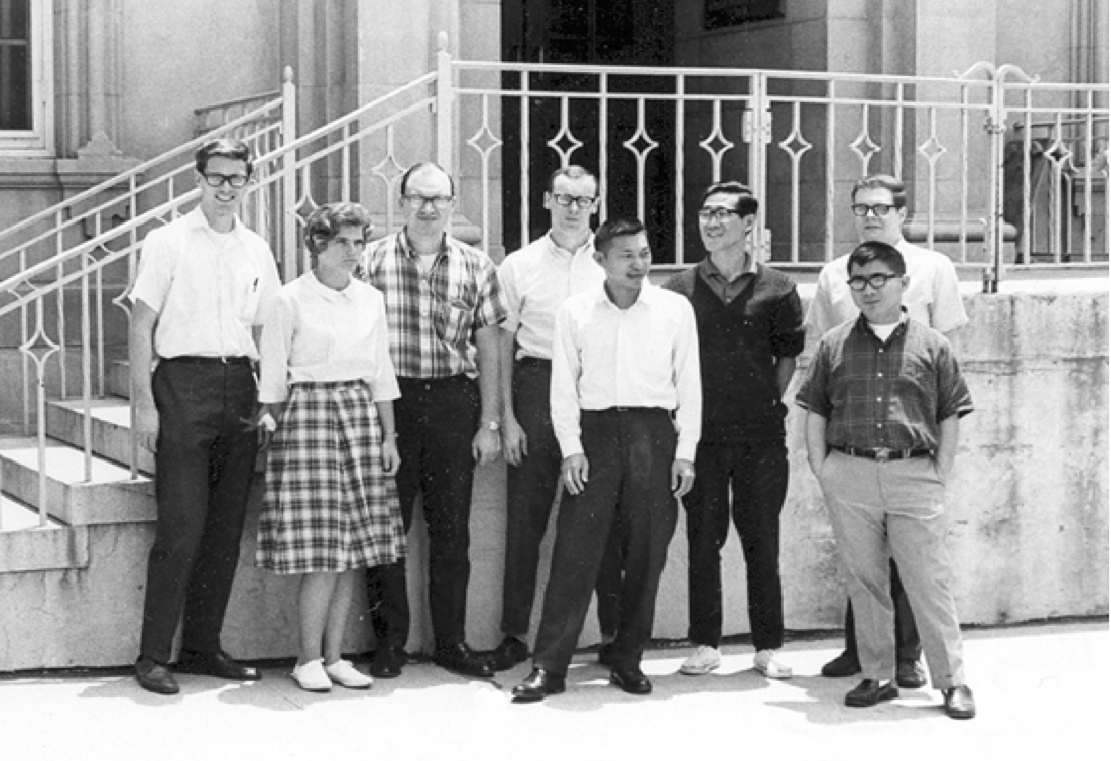
The story illustrates how, as a mentor, Chan was “extremely trusting with extremely high expectations,” Prestegard said. Later on, when supervising young Ph.D. students and postdocs in his own lab, Prestegard would embrace that principle of empowerment as well as other qualities of a good mentor.
“[Jim] gave us the freedom to learn, and he was very supportive,” said Jack Lee, a former postdoc who is now director of NMR technology at UC-Santa Cruz. “It’s this kind of supporting environment and open-house policy that allowed me to do better than I would’ve otherwise. I also learned from him that you’ve got to think outside the box.”
Lee was one of several protégés from Prestegard’s Yale and UGA days who reflected on their experience in the Eminent Scholar’s lab. Most of them still work in scientific research – for labs in government, academia and industry – but others have ventured into other areas, like entrepreneurship and law.

Shan Liu, a former Ph.D. student at UGA and now an attorney, cited Prestegard’s “curiosity, optimism and patience” as a “simple formula” that helped shape her career. “I learned to stay hopeful when things go awry, to look past it and move forward,” Liu told the gathering, “and I carried this optimism with me through the years, even now.”
“In each step of [my career] journey, I could trace how it was possible because of what I learned in graduate school,” remarked Brian Hare, a Ph.D. in Prestegard’s Yale lab. “Jim nurtured an environment that was a great place to work.” Hare now oversees modeling and simulation for Vertex Pharmaceuticals.
“As a Ph.D., you learn to do problem solving, but it’s Jim’s particular approach, the way he simplifies a very complex problem, that stayed with me,” said Yves Aubin, a Yale protégé who is today a research scientist with Health Canada. “I also learned an ability to community. In a government lab, 99% of the time you’re talking to people who don’t understand science.”
Several of the speakers from the weekend’s celebration appear on a Chemistry Family Tree that shows the connections among many prominent researchers. These onetime protégés are themselves now mentors, developing the next generation of scientists, just as Prestegard helped develop them and as Sunney Chan once helped Prestegard.

“When we bring a great scientist like Jim to Georgia, we talk a lot about the grant money and the advances in research that he or she will make as a GRA Eminent Scholar,” says Susan Shows, GRA’s senior vice president. “While that’s really important, their contributions to our state go well beyond dollars and discoveries. These Scholars also develop the minds and shape the careers of those who study at Georgia’s universities.”
Indeed, that may be their most lasting legacy.